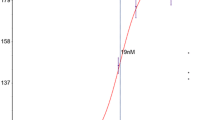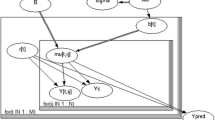Abstract
All of the experimental compound data with which we work have significant uncertainties, due to imperfect correlations between experimental systems and the ultimate in vivo properties of compounds and the inherent variability in experimental conditions. When using these data to make decisions, it is essential that these uncertainties are taken into account to avoid making inappropriate decisions in the selection of compounds, which can lead to wasted effort and missed opportunities. In this paper we will consider approaches to rigorously account for uncertainties when selecting between compounds or assessing compounds against a property criterion; first for an individual measurement of a single property and then for multiple measurements of a property for the same compound. We will then explore how uncertainties in multiple properties can be combined when assessing compounds against a profile of criteria, a process known as multi-parameter optimisation. This guides rigorous decision-making using complex, uncertain data to focus on compounds with the best chance of success, while avoiding missed opportunities by inappropriately rejecting compounds.







Similar content being viewed by others
References
Tversky A, Kahneman D (1974) Judgment under uncertainty: heuristics and biases. Science 185:1124–1131
Chadwick AT, Segall MD (2010) Overcoming psychological barriers to good discovery decisions. Drug Discov Today 15:561–569
Segall MD (2012) Multi-parameter optimization: identifying high quality compounds with a balance of properties. Curr Pharm Des 18:1292–1310
Rice J (2007) Mathematical statistics and data analysis, 3rd edn. Duxbury Press, Belmont
Abad-Zapatero C, Metz JM (2005) Ligand efficiency indices as guideposts for drug discovery. Drug Discov Today 10:464–469
Hidalgo IJ, Raub TJ, Borchardt RT (1989) Characterization of the human colon carcinoma cell line (Caco-2) as a model system for intestinal epithelial permeability. Gastroenterology 96:736–749
Irvine JD, Takahashi L, Lockhart K, Cheong J, Tolan JW, Selick HE, Grove JR (1999) MDCK (Madin–Darby canine kidney) cells: a tool for membrane permeability screening. J Pharm Sci 88:28–33
Harrington EC (1965) The desirability function. Ind Qual Control 21:494–498
Segall MD (2014) Advances in multiparameter optimization methods for de novo drug design. Expert Opin Drug Discov 9:803–817
Segall MD, Beresford AP, Gola JMR, Hawksley D, Tarbit MH (2006) Focus on Success: using in silico optimisation to achieve an optimal balance of properties. Expert Opin Drug Metab Toxicol 2:325–337
Segall MD, Chadwick A (2010) Making priors a priority. J Comput Aided Mol Des 24:957–960
Jaynes ET (2003) Probability theory: the logic of science: principles and elementary applications, vol 1. Cambridge University Press, Cambridge
Author information
Authors and Affiliations
Corresponding author
Rights and permissions
About this article
Cite this article
Segall, M.D., Champness, E.J. The challenges of making decisions using uncertain data. J Comput Aided Mol Des 29, 809–816 (2015). https://doi.org/10.1007/s10822-015-9855-2
Received:
Accepted:
Published:
Issue Date:
DOI: https://doi.org/10.1007/s10822-015-9855-2




